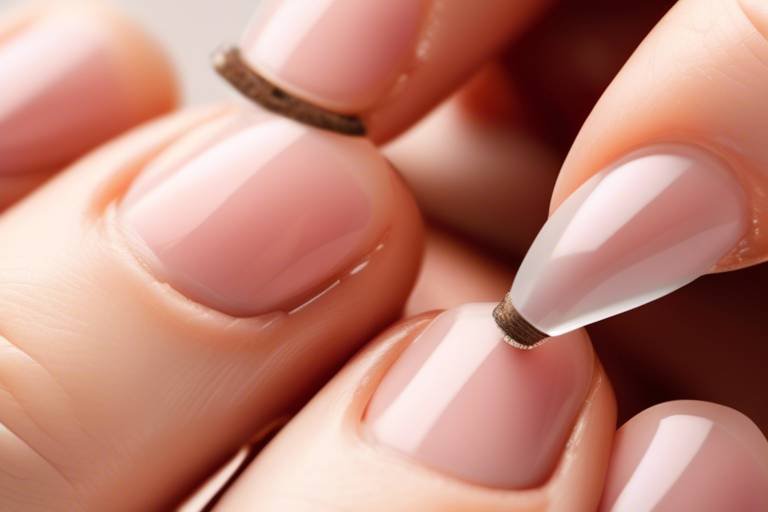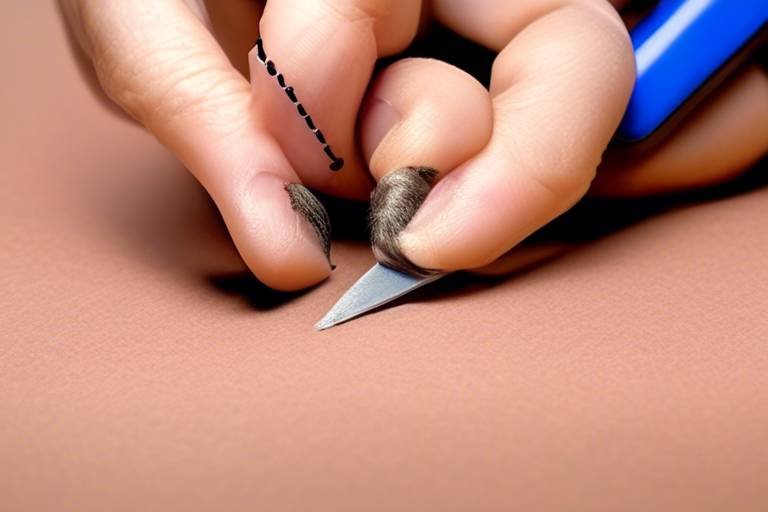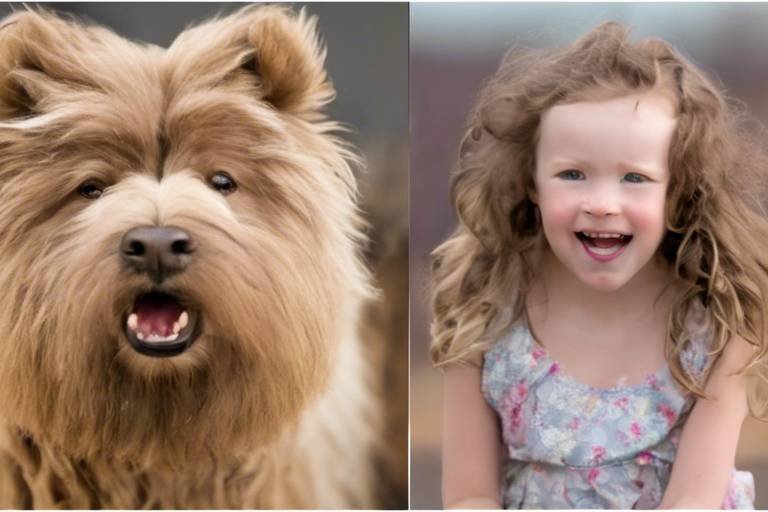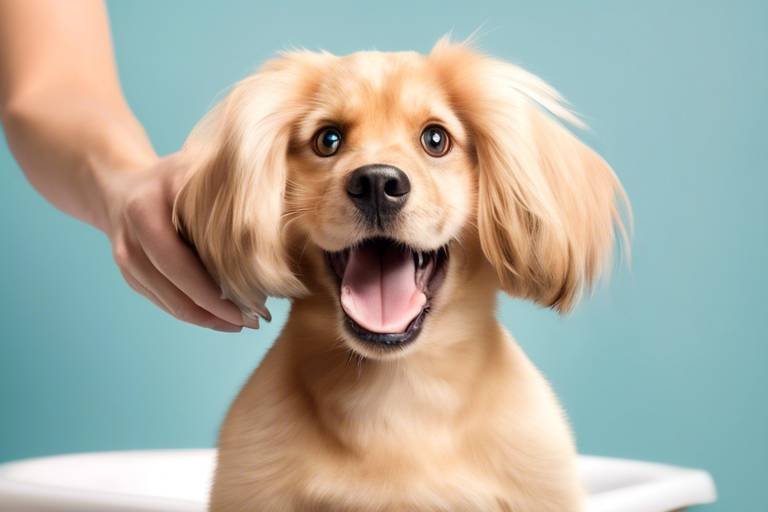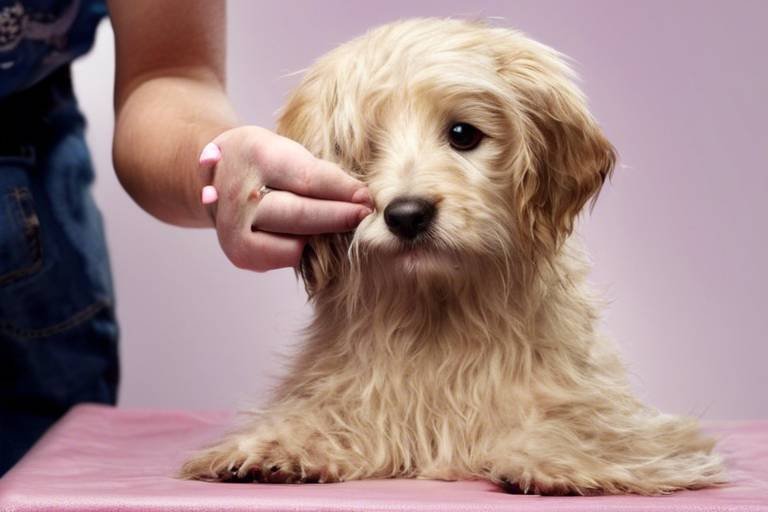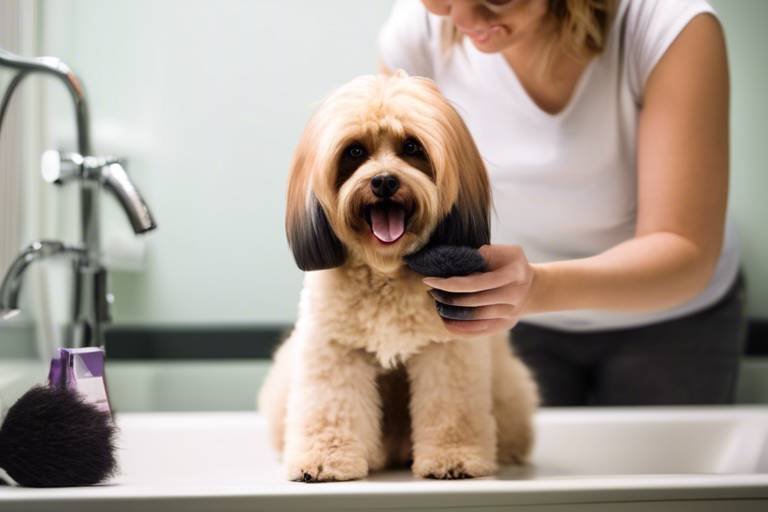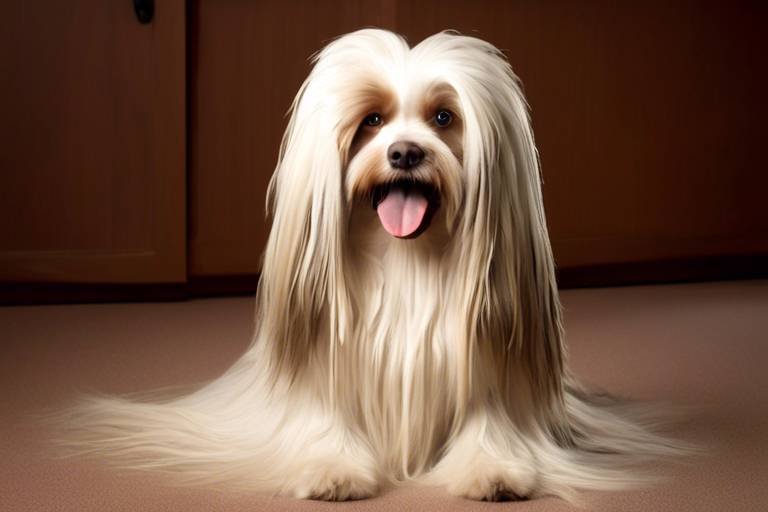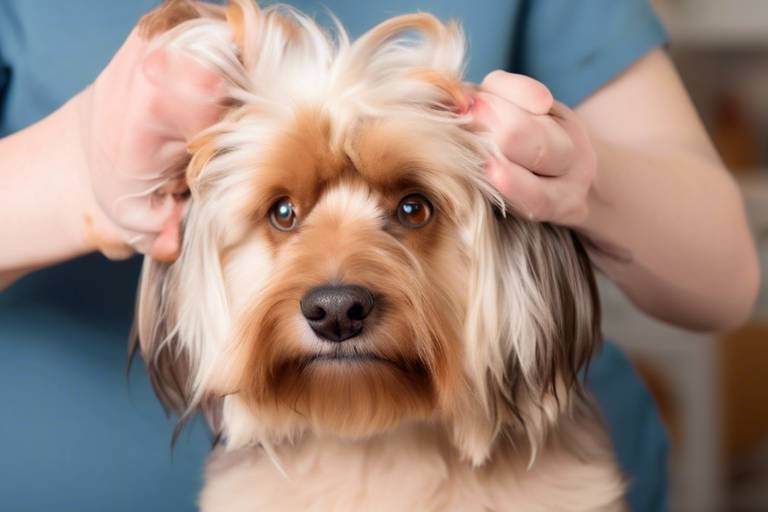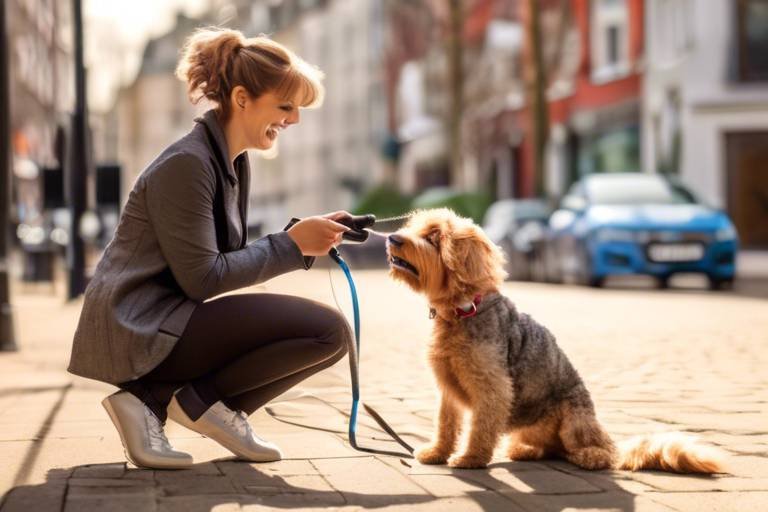How to Help Your Pet Cope with Changes in Grooming Routine
When it comes to our furry friends, grooming is more than just a routine; it’s a bonding experience that can significantly influence their overall well-being. Changes in grooming routines can be stressful for pets, leading to anxiety or behavioral issues. This article explores effective strategies and tips to assist pets in adjusting to new grooming routines, ensuring their comfort and well-being during transitions. Whether you're switching groomers, trying new products, or altering your grooming schedule, understanding how to help your pet cope is crucial.
Recognizing your pet's emotional and physical needs during grooming changes is crucial. Just like humans, pets can experience stress and anxiety when their routines are disrupted. Have you ever noticed your dog hiding under the bed when it’s time for a bath? It's their way of expressing discomfort or fear. Pets communicate their feelings through body language, so it's essential to be observant. Look for signs such as:
- Excessive panting or drooling
- Whining or barking
- Trying to escape or hide
- Changes in appetite or behavior
By paying close attention to these signals, you can better understand how your pet is reacting to changes and what adjustments you may need to make.
Establishing a soothing atmosphere can ease your pet's anxiety about grooming. Think of it as creating a spa experience for your furry friend! Here are some tips for setting up a comfortable space:
- Choose a quiet area away from distractions.
- Use soft lighting to create a calm ambiance.
- Incorporate familiar items like their favorite blanket or toy.
A comfortable environment can significantly reduce stress levels, making your pet feel more secure and relaxed during grooming sessions.
Using appropriate grooming tools can significantly impact your pet's comfort. Imagine trying to comb your hair with a brush that doesn’t suit your hair type; it would be uncomfortable, right? The same goes for pets! Each pet has unique grooming needs based on their coat type, and using the right tools can make all the difference.
Selecting the right brush or comb for your pet's coat type is essential. For instance, long-haired breeds may benefit from a slicker brush, while short-haired pets might prefer a bristle brush. Here’s a quick guide:
| Coat Type | Recommended Tool |
|---|---|
| Long Hair | Slicker Brush |
| Short Hair | Bristle Brush |
| Curly Hair | Wide-Toothed Comb |
Choosing the right tools not only makes grooming easier but also helps maintain a healthy coat, reducing shedding and matting.
Choosing the right grooming products can enhance your pet's grooming experience. Imagine using a shampoo that’s too harsh for your skin; it would leave you feeling uncomfortable. The same applies to pets! Always opt for pet-friendly shampoos and conditioners that cater to their specific needs. Look for products that are free from harmful chemicals and are designed for your pet's skin type.
Gradually introducing a new grooming routine helps pets adapt. Think of it like easing into a new workout; jumping in too fast can lead to burnout or injury. Start by incorporating small changes into your existing routine, allowing your pet to adjust at their own pace. For example, if you're changing the time of day you groom, try shifting it by just 15 minutes at first. This method can help reduce anxiety and make the transition smoother.
Using positive reinforcement can encourage your pet to accept grooming changes. Just like humans respond well to encouragement, pets thrive on positive feedback! Here are some effective reward systems that can help make grooming a more enjoyable experience:
Offering treats during grooming can create a positive association. Think of it as a reward for a job well done! Use small, tasty treats to reward your pet for calm behavior. You might say, “Good job!” and give them a treat when they sit still during brushing. This approach helps them associate grooming with positive outcomes.
Verbal encouragement and affection can also reinforce positive experiences. Just like a child feels proud when praised, pets respond similarly. Use a cheerful tone and give them lots of love during grooming sessions. This communication builds trust and helps your pet feel more secure.
Keeping an eye on your pet's behavior during grooming transitions is essential. Be vigilant for any signs of stress or discomfort. If you notice significant changes, it may be time to reassess your grooming routine or consult with a professional. Remember, your pet's well-being should always come first!
Sometimes, professional assistance is necessary for a smooth transition. If your pet is particularly anxious or resistant to grooming, hiring a professional groomer can be a game-changer. They have the experience and expertise to handle pets with varying temperaments and can provide a more comfortable experience.
Choosing a groomer who understands your pet's needs is vital. Look for someone who specializes in your pet's breed and has a gentle approach. Don’t hesitate to ask for recommendations from friends or your veterinarian. A good groomer will take the time to understand your pet and make them feel at ease.
In certain cases, behavioral issues may stem from health problems. If your pet shows significant distress during grooming, it’s wise to consult a veterinarian. They can rule out any underlying health issues that might be contributing to your pet's anxiety and provide guidance on how to proceed.
Q: How often should I groom my pet?
A: The frequency of grooming depends on your pet's breed and coat type. Long-haired breeds may require grooming several times a week, while short-haired pets may only need it once a month.
Q: What if my pet doesn't like grooming?
A: Start slow and use positive reinforcement techniques. Gradually introduce grooming tools and reward your pet for calm behavior.
Q: Can I groom my pet at home?
A: Yes! With the right tools and techniques, you can groom your pet at home. Just ensure you’re familiar with their grooming needs.
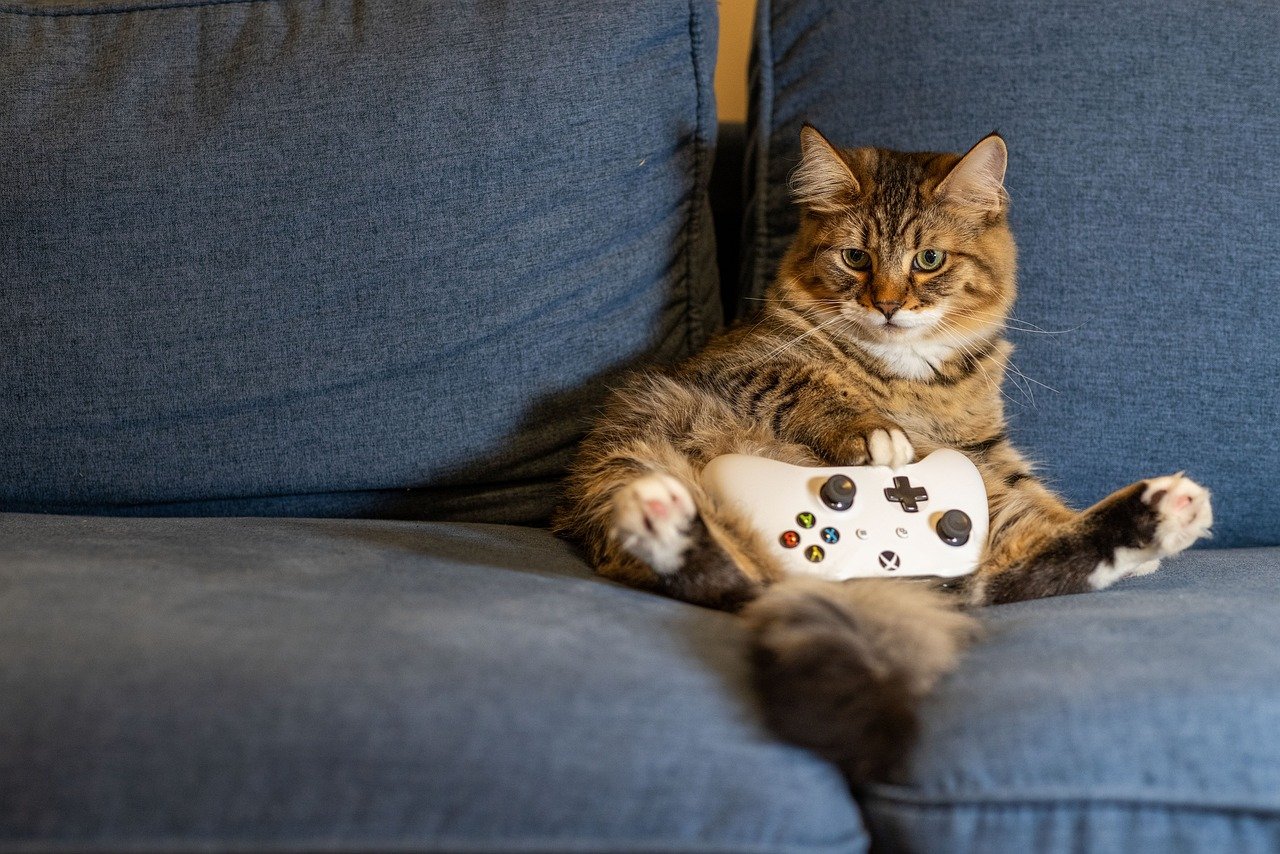
Understanding Your Pet's Needs
When it comes to grooming, pets can be surprisingly sensitive creatures. Just like us, they thrive on routine, and any changes to their grooming schedule can lead to feelings of anxiety and confusion. It's crucial to recognize that your furry companion may not immediately understand why their grooming routine has shifted. For instance, dogs and cats often rely on familiar scents and sensations, so introducing new grooming methods or tools can be a bit like throwing them into a whirlwind of uncertainty.
One of the first signs that your pet may be struggling with changes in their grooming routine is behavioral changes. You might notice them becoming more withdrawn, anxious, or even aggressive during grooming sessions. These reactions are their way of communicating discomfort or stress. Pay attention to their body language; if they are flattening their ears, tucking their tails, or trying to escape, these are clear indicators that they are not comfortable with the changes.
Additionally, consider your pet's individual personality. Some pets are naturally more adaptable than others. For example, a laid-back Golden Retriever might take a new grooming routine in stride, while a skittish rescue cat may take much longer to adjust. Understanding these personality traits is vital in tailoring your approach to their grooming needs. If your pet has previously had a negative experience with grooming, it’s essential to be extra patient and gentle as you navigate this transition.
Furthermore, don't overlook the importance of physical comfort. Ensure that your grooming environment is free from distractions and that your pet feels safe. A cozy blanket or a favorite toy can provide a sense of security. Also, consider the physical sensations associated with grooming; for instance, some pets may dislike the sound of clippers or the feel of certain brushes. By observing your pet closely, you can identify what specifically triggers their discomfort and make necessary adjustments.
In summary, understanding your pet's needs during grooming changes is about more than just the act of grooming itself. It's about recognizing their emotional and physical responses, being aware of their personality, and creating an environment that fosters comfort and safety. By doing so, you can create a grooming routine that is not only effective but also enjoyable for your beloved pet.
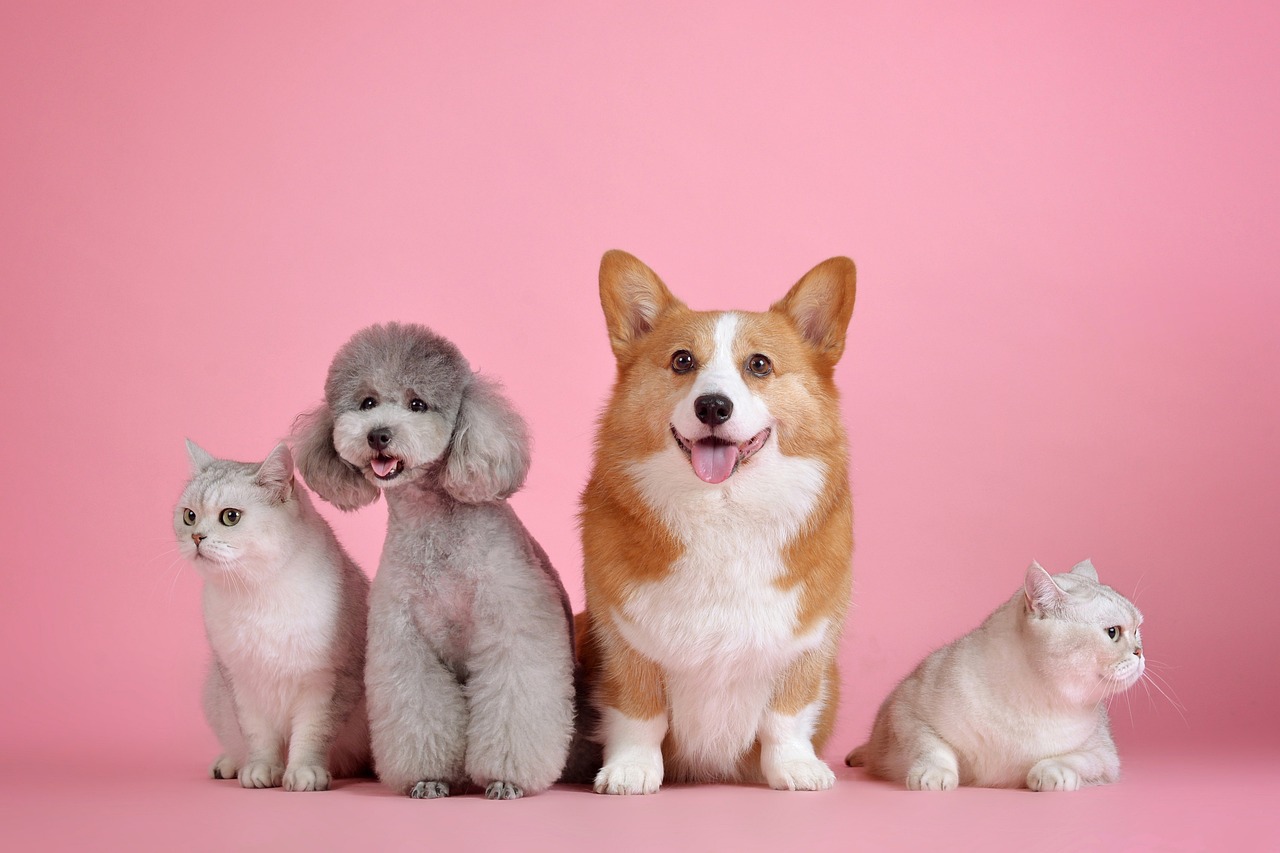
Creating a Comfortable Environment
When it comes to grooming your pet, creating a comfortable environment is essential for easing any anxiety they may feel. Just like humans, pets can be sensitive to their surroundings, and a little bit of effort can go a long way in making them feel at ease. Imagine walking into a room filled with loud noises and bright lights; it’s unsettling, right? Now think about how your furry friend might feel in a similar situation. To help your pet feel more relaxed during grooming sessions, consider the following tips:
First, choose a quiet space in your home that is free from distractions. This area should be away from the hustle and bustle of daily life, where your pet can feel safe and secure. You might want to set up a specific grooming area with their favorite blanket or bed. This will not only provide comfort but also create a familiar scent that can be calming. Soft lighting can also help reduce stress; harsh, bright lights can be overwhelming. Instead, opt for warm, gentle lighting to create a cozy atmosphere.
Next, think about the temperature of the space. Just like we can feel too hot or cold, pets can also be sensitive to temperature changes. Make sure the room is at a comfortable temperature, avoiding drafts or extreme heat. You might even consider using a heating pad or a soft pet bed to provide warmth and comfort during grooming. A calm and cozy environment can significantly influence your pet's mood, making the grooming experience much more pleasant.
Another important aspect is to minimize noise. Loud sounds can be startling for pets, so try to keep the environment as quiet as possible. If you have other pets or children, it might be wise to schedule grooming sessions during quieter times of the day. You could even play soft music in the background to help soothe your pet. The right sounds can create a serene atmosphere, making it easier for your pet to relax.
Lastly, consider incorporating some familiar toys or items into the grooming area. Having their favorite toys nearby can provide a sense of security and comfort. Just like a child clings to a teddy bear, your pet can find solace in their beloved items. This simple addition can help them feel more at home and less anxious about the grooming process.
In summary, creating a comfortable environment for your pet during grooming is about understanding their needs and making small adjustments to their surroundings. By ensuring a quiet, cozy, and familiar space, you can help your pet feel more at ease, making the grooming experience a positive one for both of you.
- How can I tell if my pet is anxious during grooming? Look for signs such as hiding, excessive panting, or trying to escape. These behaviors indicate that your pet may be feeling stressed.
- What should I do if my pet refuses to be groomed? Take a step back and assess the environment. Ensure it's calm and comfortable, and consider introducing grooming tools gradually.
- Can I use calming products for my pet? Yes, there are various calming sprays, treats, and diffusers available that can help ease your pet's anxiety during grooming.
Choosing the Right Tools
When it comes to grooming your pet, selecting the right tools is just as important as the grooming techniques you use. Imagine trying to paint a masterpiece with a brush that’s too stiff or too soft; the same principle applies to grooming your furry friend. The right tools not only make the process smoother but also ensure that your pet feels comfortable and safe throughout the grooming session. So, let’s dive into some essential grooming tools and how to choose the best ones for your pet's needs.
First and foremost, consider your pet's coat type. Different breeds have different needs, and understanding these can help you select the most suitable tools. For instance, long-haired breeds typically require tools that can effectively detangle and remove mats, while short-haired breeds may need tools that focus more on removing loose fur and dirt. Here’s a quick overview:
| Coat Type | Recommended Tools |
|---|---|
| Long-haired | Wide-toothed combs, slicker brushes, and dematting tools |
| Short-haired | Rubber grooming mitts, bristle brushes, and shedding blades |
| Curly-haired | Pin brushes and combs designed for curls |
Next, consider the material of the tools. High-quality materials can make a significant difference in durability and effectiveness. Stainless steel combs and brushes tend to last longer and provide a better grooming experience than their plastic counterparts. Additionally, ergonomic handles can make grooming easier on your hands, especially during long sessions.
Another factor to think about is your pet's temperament. If your pet is particularly anxious or sensitive, you might want to opt for tools that are designed to be gentle on the skin. For example, using a soft-bristled brush can help soothe your pet while still getting the job done. Additionally, there are grooming tools with rounded edges that can prevent scratching and irritation.
Lastly, don’t forget to include some specialized tools in your grooming kit. Depending on your pet's specific needs, you might find the following tools beneficial:
- De-shedding tools: Great for reducing shedding, especially during seasonal changes.
- Ear cleaners: Essential for maintaining ear hygiene, particularly in breeds prone to ear infections.
- Nail clippers: Keeping your pet's nails trimmed is crucial for their comfort and health.
Choosing the right grooming tools is not just about aesthetics; it’s about ensuring a stress-free and effective grooming experience for your pet. By understanding your pet's specific needs and investing in quality tools, you can turn grooming from a chore into a bonding experience. So, gear up and get ready to pamper your furry friend!
Brushes and Combs
When it comes to grooming your pet, selecting the right brush or comb is not just a matter of aesthetics; it’s about ensuring their comfort and promoting a healthy coat. Think of grooming as a spa day for your furry friend; the right tools can make all the difference between a relaxing experience and a stressful one. Each pet has unique grooming needs based on their coat type, and understanding these requirements is crucial for maintaining their overall well-being.
For instance, long-haired breeds like Persian cats or Golden Retrievers require tools that can effectively detangle and remove loose hair. A wide-toothed comb is often ideal for these breeds, as it can gently work through knots without pulling or causing discomfort. On the other hand, short-haired pets like Beagles or Boxers might benefit from a bristle brush, which helps distribute natural oils throughout their coat, keeping it shiny and healthy.
Here’s a quick overview of different types of brushes and combs you might consider:
| Type of Tool | Best For | Benefits |
|---|---|---|
| Pin Brush | Long-haired breeds | Detangles and removes loose hair |
| Bristle Brush | Short-haired breeds | Distributes natural oils, adds shine |
| Rubber Brush | All coat types | Gathers loose hair and stimulates skin |
| Combs | All coat types | Detangles and removes debris |
Choosing the right brush or comb can also help in preventing matting, especially in breeds with thick or curly coats. Regular grooming not only keeps your pet looking good but also allows you to check for any skin issues or parasites. Think of it as a bonding experience; the more comfortable your pet feels during grooming, the more likely they are to enjoy it!
In conclusion, investing in the right grooming tools tailored to your pet's specific needs will enhance their grooming experience significantly. Remember, a happy pet is one that feels comfortable and secure during grooming sessions, so take the time to choose wisely!
- How often should I groom my pet? - It depends on the breed and coat type. Long-haired pets may need grooming several times a week, while short-haired breeds might only need it once a week.
- What should I do if my pet resists grooming? - Start slowly and use positive reinforcement techniques like treats and praise to create a positive association with grooming.
- Can I use human grooming tools on my pet? - It's best to use tools specifically designed for pets, as human tools may not be safe or effective for their unique coat types.
Shampoo and Conditioners
When it comes to grooming your furry friend, selecting the right shampoo and conditioner is just as important as choosing the right brush. A good grooming experience can be significantly enhanced by using products that cater specifically to your pet's needs. For instance, if your pet has sensitive skin, look for shampoos that are hypoallergenic and free from harsh chemicals. These gentle formulas can help prevent irritation while still providing a thorough clean.
Moreover, the type of coat your pet has will also influence your choice of grooming products. For example, dogs with long, flowing hair may benefit from a moisturizing shampoo and conditioner that helps detangle and soften their fur. In contrast, short-haired breeds might require a different approach, focusing on products that enhance shine and cleanliness without weighing their coat down.
Here’s a quick breakdown of some common types of shampoos and conditioners you might consider:
| Type | Best For | Benefits |
|---|---|---|
| Hypoallergenic | Sensitive skin | Reduces irritation and allergic reactions |
| Moisturizing | Dry or long hair | Hydrates and detangles fur |
| Deodorizing | Odor control | Neutralizes bad odors effectively |
| Medicated | Skin conditions | Treats specific skin issues like dermatitis |
It's also crucial to consider the scent of the shampoo. While you might love a fresh lavender fragrance, your pet may not appreciate strong scents. Opt for mild, natural fragrances that are pleasant but not overwhelming. Additionally, always perform a patch test before using a new product extensively. Apply a small amount on your pet's skin and wait for 24 hours to ensure there are no adverse reactions.
Finally, remember that grooming is not just about cleanliness; it’s also a bonding experience. Using the right shampoo and conditioner can make your pet feel pampered and loved, turning what might be a stressful routine into a delightful spa day. So next time you stock up on grooming supplies, take a moment to choose products that will make your pet feel their best!
Establishing a New Routine
When it comes to grooming, change can be challenging for our furry friends. Just like we might feel a bit uneasy when our daily routine is altered, pets can also experience stress when their grooming habits shift. To help your pet adjust smoothly, it's essential to take a gradual approach in establishing a new grooming routine. Think of it as introducing a new flavor of ice cream to a child—too sudden, and they might reject it outright, but with a little patience and encouragement, they might just love it!
Start by breaking down the grooming process into smaller, manageable steps. For instance, if your pet is used to a specific grooming method, begin by incorporating one new element at a time. Perhaps you could start with a different brush or a new shampoo, and once your pet is comfortable with that, gradually introduce other changes. This way, your pet won’t feel overwhelmed by the sudden shift and will have a chance to get accustomed to each new aspect of their grooming.
Another effective strategy is to set a consistent schedule for grooming sessions. Pets thrive on routine, and having a set time for grooming can provide a sense of security. You might choose to groom your pet at the same time each week, or perhaps after their daily walk. Consistency will help your pet understand that grooming is a regular part of their life, much like feeding or playtime. Additionally, consider keeping sessions short and sweet at first, gradually extending the duration as your pet becomes more comfortable.
Incorporating playtime and relaxation into the grooming process can also make a significant difference. Before starting a grooming session, spend a few minutes engaging your pet in play. This will help them release any pent-up energy and associate the grooming time with fun. After grooming, reward them with a favorite toy or a cuddle session. This not only reinforces positive behavior but also strengthens your bond with your pet.
Finally, remember to be patient. Adapting to a new grooming routine can take time, and every pet is different. Some may adjust quickly, while others might need a little longer. Keep an eye on your pet’s reactions and be prepared to make adjustments as necessary. If your pet seems particularly distressed, it might be worth revisiting the steps and slowing down the process. After all, the goal is to create a grooming experience that is enjoyable and stress-free for both you and your pet.
- How long does it take for a pet to adjust to a new grooming routine?
The adjustment period varies by pet, but generally, it can take a few weeks. Be patient and attentive to your pet's reactions.
- What if my pet shows signs of distress during grooming?
If your pet seems overly anxious or distressed, consider consulting a professional groomer or veterinarian for advice.
- Can I use regular human grooming products on my pet?
No, it's best to use grooming products specifically formulated for pets to avoid skin irritation and other issues.
- How often should I groom my pet?
This depends on your pet's breed and coat type. Some pets may need grooming weekly, while others may require it monthly.
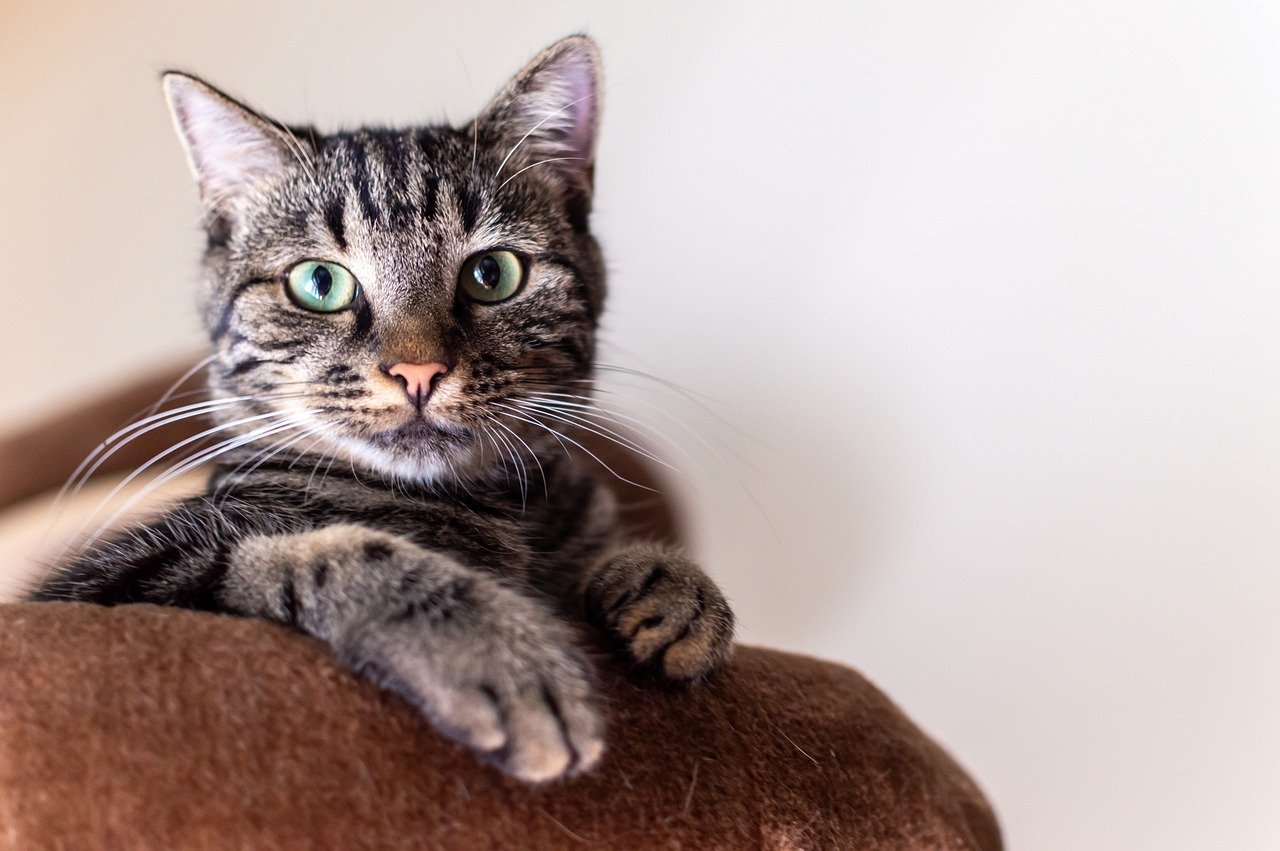
Positive Reinforcement Techniques
When it comes to helping your pet adjust to a new grooming routine, positive reinforcement is your best friend. Think of it as a way to turn a potentially stressful experience into a fun bonding moment. Just like how we humans appreciate a little encouragement, our furry friends thrive on it too! By rewarding your pet for good behavior during grooming sessions, you can create a positive association that makes them look forward to the next brush or bath.
One effective method is to incorporate treats into the grooming process. Imagine this: your dog is getting a bath, and instead of just focusing on the water and suds, you offer them a tasty treat. Suddenly, that bath becomes a rewarding experience rather than a dreaded chore. This technique not only distracts them from any anxiety but also reinforces the idea that grooming can be a good thing! It's important to choose treats that your pet loves, as this will make the reward even more enticing. You might want to consider using small, soft treats that are easy to chew, especially for pets who might be nervous.
In addition to treats, verbal praise and affection play a crucial role in positive reinforcement. Just like a child beams when they hear "good job," your pet will respond to your enthusiastic praise. During grooming, make sure to shower them with compliments like "You’re such a good boy!" or "What a brave kitty!" This verbal encouragement not only boosts their confidence but also strengthens the bond between you. Pairing your words with gentle pets or scratches behind the ears can amplify the positive feelings they associate with grooming time.
It's also beneficial to create a routine where your pet knows what to expect. For instance, if you groom them at the same time each week, they can start to look forward to that special time with you. You might even find that they begin to seek out the grooming tools themselves, associating them with the fun and rewards that come along with it.
However, it's essential to be patient. Some pets may take longer to adjust than others. If your pet shows signs of anxiety, such as hiding or trying to escape, take a step back and reassess your approach. You can gradually introduce grooming tools while rewarding them for calm behavior, allowing them to explore the tools at their own pace. This gentle exposure can help build their confidence and reduce fear.
In summary, using positive reinforcement techniques during grooming can transform the experience from a stressful ordeal into a delightful ritual. By incorporating treats, verbal praise, and establishing a consistent routine, you can help your pet feel more comfortable and secure. Remember, the goal is to make grooming a time for bonding and trust, ensuring that both you and your pet look forward to it!
- What are some good treats to use for positive reinforcement? Look for small, soft treats that your pet loves. Training treats are often a great choice as they are easy to chew and digest.
- How long should I spend grooming my pet? Start with short sessions, around 5-10 minutes, and gradually increase the time as your pet becomes more comfortable.
- What if my pet is still anxious despite positive reinforcement? It may be helpful to consult a professional groomer or a veterinarian for additional strategies tailored to your pet's needs.
Incorporating Treats
When it comes to grooming your pet, one of the most effective ways to create a positive experience is by into the process. Think of treats as a little sprinkle of joy amidst the grooming routine, transforming what might feel like a chore into a delightful experience for your furry friend. But how do you go about using treats effectively? Let’s dive into some strategies that can help!
First off, it’s crucial to choose the right kind of treats. You want to select something that your pet absolutely loves, as this will make them more willing to cooperate during grooming sessions. Whether it’s crunchy biscuits, soft chews, or even their favorite fruits, having a treat that excites them can work wonders. Remember, the goal is to create a positive association with grooming, so the treats should be special and not something they get every day.
Timing is everything when it comes to reward-based training. Start by giving your pet a treat before the grooming begins. This sets a positive tone and makes your pet associate the grooming area with something enjoyable. During the grooming, you can reward them with treats for calm behavior. For example, if your dog stays still while you brush them, offer a treat as a reward. This not only encourages good behavior but also helps them understand that grooming can be a pleasant experience.
Moreover, be sure to keep the treats handy. You can use a small pouch or a treat jar that’s easily accessible during grooming sessions. This way, you won’t have to leave your pet unattended to grab a treat, which could disrupt the flow of the grooming process. The key is to keep the experience smooth and uninterrupted.
In addition to treats, consider incorporating verbal praise and affection. When your pet does something right, such as sitting still or allowing you to brush a sensitive area, combine the treat with a hearty “Good job!” or a gentle pat. This dual approach of treats and affection reinforces positive behavior and builds trust between you and your pet.
Lastly, be mindful of the quantity and quality of treats you offer. While it’s tempting to shower your pet with goodies, moderation is key. Too many treats can lead to unhealthy weight gain, which is something you definitely want to avoid. Instead, opt for small, bite-sized treats that are low in calories but high in flavor. This way, your pet can enjoy the rewards without compromising their health.
In summary, incorporating treats into your pet's grooming routine can significantly enhance their experience. By selecting the right treats, timing your rewards effectively, and combining them with verbal praise, you can create a grooming environment that is not only manageable but also enjoyable for your furry companion. Remember, the goal is to make grooming a positive experience, and with a little creativity and care, you can achieve just that!
- How often should I groom my pet? - The frequency of grooming depends on your pet's breed and coat type. Long-haired breeds may require grooming several times a week, while short-haired breeds might only need it once a month.
- What should I do if my pet resists grooming? - Start slowly and use treats to create positive associations. If resistance continues, consider consulting a professional groomer.
- Are there specific treats recommended for grooming sessions? - Look for low-calorie, soft treats that can be easily broken into smaller pieces to keep your pet engaged without overindulging.
Verbal Praise and Affection
When it comes to grooming your pet, verbal praise and affection can work wonders. Just like humans, pets thrive on positive reinforcement. Imagine how you feel when someone compliments your efforts; it boosts your confidence and motivates you to keep going. The same principle applies to our furry friends. By using encouraging words and gentle touches, you can create a soothing atmosphere that makes grooming a more enjoyable experience for your pet.
It's important to remember that pets are sensitive to our tones and body language. When you use a cheerful and upbeat voice while grooming, your pet is likely to feel more at ease. A simple “Good job!” or “You’re such a brave pup!” can make a world of difference. This kind of verbal praise not only reassures your pet but also strengthens the bond between you two. Think of it as a team effort—you’re both in this together, and your encouragement can help your pet feel safe and loved.
Additionally, combining verbal praise with physical affection can amplify the positive effects. For example, while brushing your pet, you can gently stroke their back or scratch behind their ears. This dual approach of words and touch can create a comforting experience. Pets often associate grooming with love and care when they receive both praise and affection during the process.
To make the most of verbal praise and affection, consider the following tips:
- Use a cheerful tone: Your enthusiasm can be contagious!
- Be consistent: Praise your pet every time they exhibit calm behavior during grooming.
- Incorporate affection: Petting, cuddling, or belly rubs can enhance the experience.
In essence, verbal praise and affection are not just nice additions to grooming; they are essential components that can transform the entire experience. By showering your pet with love and encouragement, you pave the way for a positive grooming routine that fosters trust and happiness.
Q1: How can I tell if my pet is anxious during grooming?
A1: Signs of anxiety in pets can include excessive panting, whining, hiding, or trying to escape. Pay attention to your pet's body language and reactions during grooming sessions.
Q2: What if my pet doesn't respond to verbal praise?
A2: Every pet is different. If verbal praise doesn't seem to resonate, try incorporating more physical affection or treats as positive reinforcement. Experiment to find what works best for your furry friend.
Q3: How often should I groom my pet?
A3: Grooming frequency depends on the breed and coat type of your pet. Long-haired breeds may require more frequent grooming, while short-haired breeds might only need it occasionally. Consult your veterinarian for personalized advice.
Q4: Can I use human shampoo for my pet?
A4: No, it's not recommended. Human shampoos can be too harsh for pets and may cause skin irritation. Always use pet-friendly grooming products.
Q5: When should I consider hiring a professional groomer?
A5: If your pet shows extreme distress during grooming, or if you’re unsure about how to handle specific grooming needs, it’s wise to consult a professional groomer.
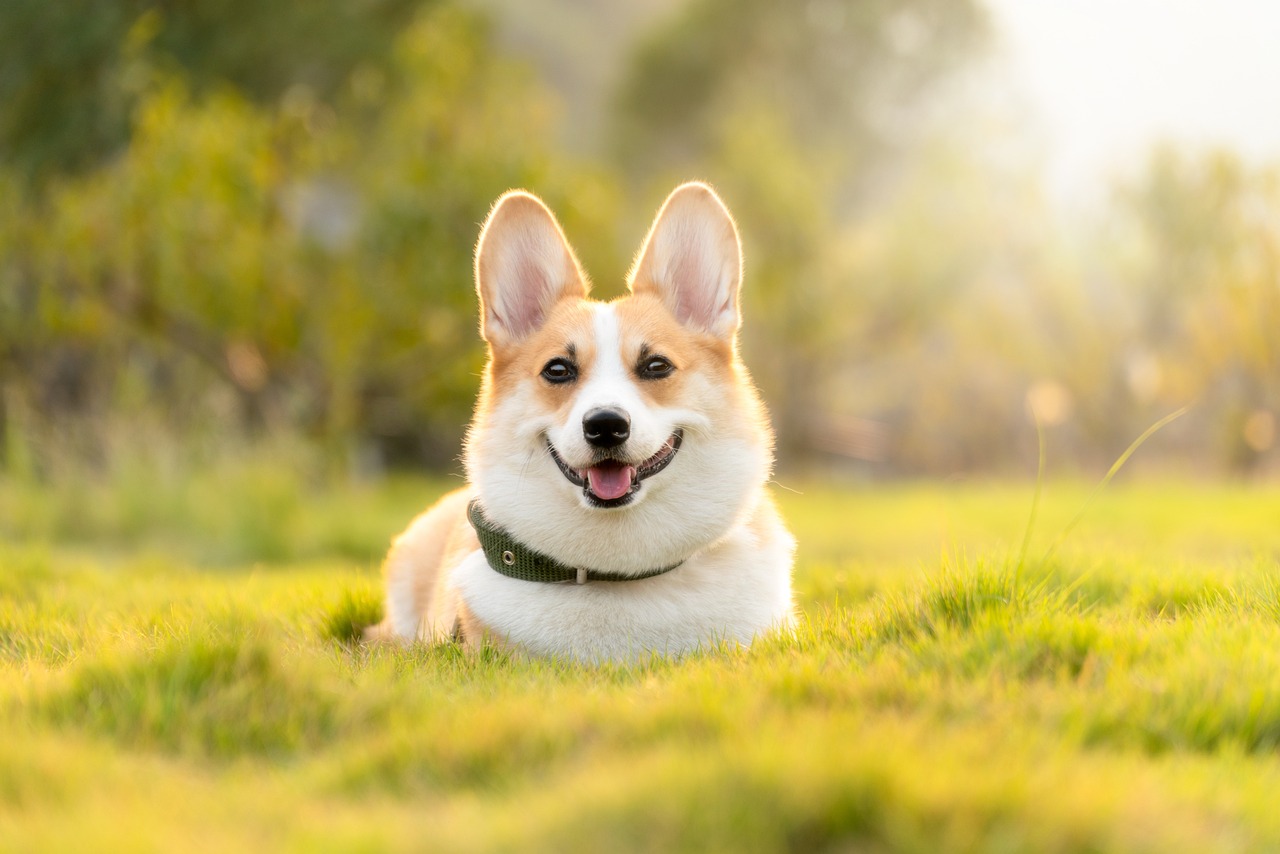
Monitoring Behavioral Changes
When it comes to grooming, your pet's behavior can tell you a lot about how they are coping with the changes. Just like humans, pets can experience a range of emotions, from excitement to anxiety, especially when their routines are altered. It's vital to keep a close eye on their reactions during grooming sessions, as these behavioral changes can provide crucial insights into their comfort levels. Are they wagging their tails and enjoying the process, or are they hiding under the couch and avoiding the grooming tools? Understanding these signals can help you make necessary adjustments to ensure a smoother grooming experience.
One of the first signs to monitor is your pet's body language. For instance, if your dog is showing signs of relaxation, such as a loose body posture and wagging tail, they're likely feeling comfortable. However, if you notice signs of stress, such as excessive panting, growling, or attempts to escape, it may be time to rethink your approach. Cats, too, have their own unique ways of expressing discomfort; if your feline friend is hissing or swatting at the grooming brush, it’s a clear indicator that they are not on board with the new routine.
Keeping a journal of your pet's behavioral changes during grooming can be incredibly helpful. Note the following:
- Specific behaviors observed during grooming sessions
- Changes in appetite or energy levels
- Any signs of aggression or withdrawal
- How long it takes for your pet to calm down after grooming
This documentation can help you identify patterns over time and make informed decisions about how to adjust the grooming routine to better suit your pet's needs. If you notice persistent signs of distress, it may be beneficial to consult with a professional groomer or a veterinarian who can provide specialized advice tailored to your pet's specific situation.
Additionally, consider the environment in which you are grooming your pet. Sometimes, external factors like noise, unfamiliar scents, or even the time of day can affect their mood. By creating a calm and familiar atmosphere, you can help alleviate some of their anxiety. For example, playing soft music or using calming scents can create a more soothing environment. Remember, a happy pet is a well-groomed pet!
In conclusion, monitoring your pet's behavioral changes during grooming is not just about keeping an eye on their reactions; it’s about building a trusting relationship with them. By being attentive and responsive to their needs, you can transform grooming from a stressful chore into a positive bonding experience. After all, grooming should be as enjoyable for your pet as it is for you!
Q: How can I tell if my pet is stressed during grooming?
A: Look for signs such as excessive panting, hiding, growling, or attempts to escape. These behaviors indicate that your pet may be uncomfortable or anxious.
Q: What should I do if my pet shows aggression during grooming?
A: If your pet exhibits aggressive behavior, stop the grooming session immediately. Consider consulting with a professional groomer or a veterinarian for advice on how to proceed safely.
Q: How long does it take for pets to adjust to a new grooming routine?
A: Adjustment time varies by pet; some may adapt quickly within a few sessions, while others may take weeks. Patience and gradual changes are key.
Q: Are there any tools that can help reduce my pet's anxiety during grooming?
A: Yes! Tools like calming sprays, soft brushes, and treats can make the grooming experience more pleasant for your pet.

Seeking Professional Help
When it comes to grooming, sometimes our beloved pets need a little extra assistance. It's not uncommon for pets to feel overwhelmed by changes in their grooming routine, and that's where professional help can make a world of difference. If you notice that your furry friend is consistently anxious, fearful, or resistant during grooming sessions, it might be time to consider seeking the expertise of a professional groomer. These trained individuals not only have the skills to groom your pet effectively but also understand animal behavior, which allows them to handle your pet with care and compassion.
So, how do you know when it's the right time to reach out for help? Here are some signs that your pet may benefit from professional grooming:
- Your pet shows signs of distress, such as growling, biting, or excessive squirming during grooming.
- They have a matted coat that you can't manage to brush out yourself.
- Your pet has specific grooming needs due to their breed or coat type that you may not be able to meet.
- They have skin conditions or other health issues that require special handling.
Finding the right groomer can feel like searching for a needle in a haystack, but it doesn't have to be! Here are some tips to help you make the best choice:
- Research: Look for groomers in your area and read reviews from other pet owners. Websites and social media can provide valuable insights.
- Ask for Recommendations: Talk to friends, family, or your veterinarian for their recommendations on trusted groomers.
- Visit the Grooming Facility: Take a tour of the grooming salon. Observe how the staff interacts with pets and check for cleanliness and safety standards.
Once you've found a potential groomer, don’t hesitate to ask them questions about their experience, grooming techniques, and how they handle anxious pets. A good groomer will be happy to answer your questions and put your mind at ease. Remember, you're looking for someone who understands your pet's unique needs and can provide a positive grooming experience.
In some cases, your pet's grooming anxiety could be linked to underlying health issues. If you've noticed significant behavioral changes or if your pet seems to be in pain during grooming, it's crucial to consult with a veterinarian. They can rule out any medical problems that may be contributing to your pet's distress and offer guidance on how to proceed with grooming safely.
In summary, seeking professional help for your pet’s grooming needs can significantly ease their transition into a new routine. By finding the right groomer and consulting with your veterinarian when necessary, you can ensure that your furry friend receives the care they need, all while building their confidence and trust during grooming sessions.
Finding the Right Groomer
Choosing the right groomer for your pet is akin to finding the perfect pair of shoes; it requires careful consideration and a bit of trial and error. You want someone who not only understands your pet's unique needs but also makes them feel comfortable and secure during grooming sessions. A great groomer can transform a stressful experience into a pleasant one, ensuring that your pet leaves looking and feeling fabulous. So, how do you find this gem of a groomer? Let’s dive into some essential factors to consider.
First and foremost, experience matters. Look for groomers who have a solid background in handling pets similar to yours. For example, if you have a long-haired breed, it’s crucial to find someone who knows how to manage that type of coat. Ask potential groomers about their experience with your specific breed or coat type. This not only helps in maintaining your pet’s appearance but also ensures that they are treated with the utmost care.
Another important aspect is the grooming environment. A clean, organized, and calm grooming space can significantly affect your pet's comfort level. When visiting a grooming salon, take a moment to observe the atmosphere. Is it welcoming? Are the staff members friendly and approachable? A positive environment can ease your pet's anxiety and make the grooming process much smoother.
Communication is key! A good groomer should be open to discussing your pet's grooming needs and any specific concerns you may have. Don’t hesitate to ask questions about their grooming techniques, the products they use, and how they handle pets that may be anxious or difficult. A groomer who values your input and is willing to tailor their approach to suit your pet’s personality is definitely worth considering.
Additionally, recommendations can go a long way. Talk to fellow pet owners, your veterinarian, or local pet stores to get suggestions on reputable groomers in your area. Personal experiences and word-of-mouth referrals can provide valuable insights into a groomer's reputation and the quality of care they provide. You might even find some hidden gems that you wouldn’t have considered otherwise!
Lastly, consider scheduling a trial grooming session. This allows you to gauge how your pet reacts to the groomer and the overall experience. Pay attention to your pet's behavior—do they seem relaxed and happy, or are they anxious and fearful? A trial run can help you determine if the groomer is the right fit for your furry friend.
In summary, finding the right groomer involves a combination of research, observation, and communication. By taking the time to assess these factors, you can ensure that your pet receives the best possible grooming experience, making those grooming sessions something to look forward to rather than dread.
- How often should I groom my pet? The grooming frequency depends on your pet's breed, coat type, and lifestyle. Long-haired breeds may require grooming every few weeks, while short-haired breeds might only need it monthly.
- What should I do if my pet is anxious during grooming? Try to find a groomer who specializes in anxious pets, and consider using calming products or techniques to help ease their stress.
- Can I groom my pet at home? Yes, many pet owners successfully groom their pets at home. However, it’s essential to use the right tools and techniques to ensure safety and comfort.
Consulting with a Veterinarian
When it comes to your pet's grooming routine, sometimes the changes can lead to more than just a little anxiety; they might signal underlying health issues that require attention. If you notice your furry friend displaying significant distress during grooming sessions, it’s crucial to consider consulting with a veterinarian. Veterinarians are trained to identify health problems that might not be immediately obvious, and they can provide insights that could make a world of difference in your pet's grooming experience.
For instance, if your pet is unusually aggressive or fearful during grooming, it could be a sign of pain or discomfort related to skin conditions, allergies, or even dental issues. Ignoring these signs can lead to a cycle of stress for both you and your pet, making grooming a dreaded chore instead of a bonding experience. A vet can perform a comprehensive examination to rule out any medical conditions that could be contributing to your pet's behavior.
Moreover, a veterinarian can recommend specific grooming techniques or products that are suitable for your pet’s unique needs. This is especially important for pets with sensitive skin or specific coat types that require special care. By following their guidance, you can ensure that your grooming routine not only meets your pet's aesthetic needs but also promotes their overall health and well-being.
In addition to physical health assessments, veterinarians can also provide advice on behavioral training. They might suggest techniques to help your pet feel more comfortable during grooming, such as desensitization exercises or gradual exposure to grooming tools. This can be a game-changer in transforming grooming from a stressful experience into a pleasant one. After all, a happy pet is a healthy pet!
So, if your pet is showing signs of distress or if you’re unsure about how to proceed with their grooming routine, don’t hesitate to reach out to a veterinarian. Their expertise can guide you in creating a grooming routine that is not only effective but also enjoyable for your beloved companion.
- How can I tell if my pet is in pain during grooming? Look for signs like excessive whining, growling, or trying to escape. These behaviors can indicate discomfort or fear.
- What should I do if my pet has a bad reaction to grooming? Consult your veterinarian immediately to rule out any underlying health issues and to discuss alternative grooming methods.
- How often should I take my pet to the vet for grooming-related issues? It’s a good idea to have a vet check-up at least once a year, but if you notice behavioral changes, consult them sooner.
- Can my veterinarian recommend a groomer? Yes, many veterinarians have partnerships with local groomers and can recommend someone who understands your pet’s needs.
Frequently Asked Questions
- How can I tell if my pet is stressed during grooming?
Pets can show signs of stress in various ways, such as excessive panting, hiding, or trying to escape. Look for changes in their body language like tucking their tail, flattening their ears, or growling. Recognizing these signs early can help you adjust your grooming routine to make it more comfortable for them.
- What should I do if my pet refuses to be groomed?
If your pet is resistant to grooming, try introducing the grooming tools slowly. Allow them to sniff and explore the items without pressure. Gradually incorporate short grooming sessions and reward them with treats and praise. Patience is key; never force your pet, as this can create negative associations.
- Are there specific grooming tools for different types of coats?
Absolutely! Different coat types require different tools. For instance, long-haired pets benefit from slicker brushes, while short-haired breeds may do well with rubber brushes. Understanding your pet's coat type will help you choose the right tools for effective grooming.
- How often should I groom my pet?
The frequency of grooming depends on your pet's breed and coat type. Generally, long-haired pets require grooming at least every few days, while short-haired breeds may only need grooming once a week. Regular grooming helps prevent matting and keeps their coat healthy.
- Can I use human shampoo on my pet?
No, it's best to avoid using human shampoo on pets. Human shampoos can disrupt the pH balance of a pet's skin, leading to irritation. Always opt for pet-friendly shampoos that are specifically formulated for their needs.
- What if my pet has a bad experience with grooming?
If your pet has had a negative experience, take a step back and allow them some time before trying again. Gradually reintroduce grooming in a calm environment, using treats and praise to create positive associations. If the anxiety persists, consider consulting a professional groomer or a veterinarian.
- When should I seek professional grooming help?
If your pet shows significant distress during grooming or if you feel overwhelmed, it might be time to seek professional help. A skilled groomer can provide a stress-free experience and help you understand how to groom your pet effectively.
- How can I find a good groomer for my pet?
Look for a groomer with experience handling your pet's breed and temperament. Read reviews, ask for recommendations from friends or your veterinarian, and schedule a visit to see the facility. A good groomer will prioritize your pet's comfort and well-being.
- Should I consult a veterinarian if my pet is anxious about grooming?
Yes, if your pet exhibits extreme anxiety or behavioral changes during grooming, it’s wise to consult a veterinarian. They can assess if there are underlying health issues contributing to the stress and provide guidance on how to address the situation.





